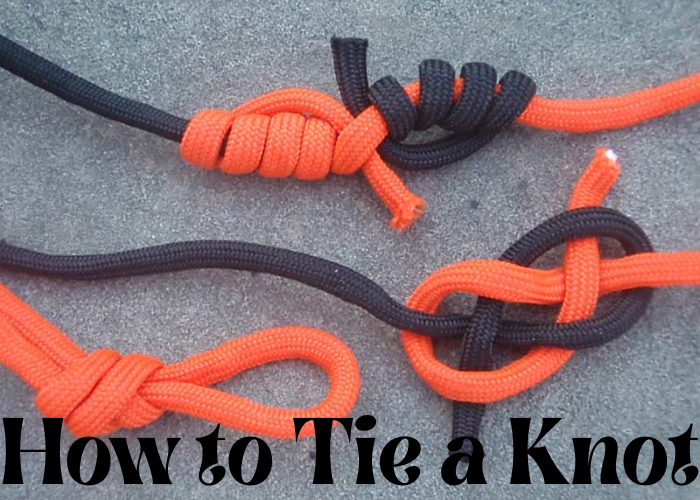knots are one of the oldest and most versatile forms of fastening. There are knots for every situation, whether you need to secure a load on a truck or just tie your shoes. Learning how to tie knots is a handy skill that can come in handy in a variety of situations. In this blog post, we will teach you how to tie four common knots. Read on to learn how to knot like a pro!
The Square Knot
The square knot is a versatile and useful knot that can be used for a variety of purposes, from tying shoelaces to securing cargo on a ship. It’s also known as the ‘reef knot’ because it was traditionally used by sailors to tie down the reef points on their sails. To tie a square knot, start by threading the end of one rope through the loop of the other. Then, cross the two ropes in the middle, and tuck the end of the first rope under the second rope. Finally, pull both ropes tight to secure the knot. With a little practice, you’ll be able to tie a square knot in no time!
The Reef Knot
The reef knot is one of the most versatile knots there is. It can be used to tie two pieces of rope together, or to secure a loop in a single piece of rope. It’s also relatively easy to tie and untie, making it a good choice for situations where you might need to adjust or loosen the knot. The reef knot gets its name from its use in sailing, where it was traditionally used to tie reef points (the part of the sail that is gathered up when reducing the sails). These days, the reef knot is still used in sailing, but it has also found its way into many other applications. It’s commonly used by climbers, campers, and even surgeons!
The reef knot is made by tying two overhand knots, each in opposite directions. To tie the reef knot, start by holding the two ends of the rope in your left hand. Take the end on the right and make an overhand knot around the other end (left end), making sure that you don’t twist or cross the ropes as you do so. Now take the left end and make an overhand knot around the right end, again making sure not to twist or cross the ropes. At this point, you should have two overlapping knots. Pull on both ends of the rope until the two knots are snug against each other, and you’re done!
The Sheet Bend
The sheet bend is a versatile knot that can be used for a variety of purposes, from tying rope to fastening sheet metal. The sheet bend is created by tying a loop in one rope, then passing the end of the second rope through the loop. The sheet bend is easy to tie and untie, and is strong enough to hold heavy loads. Additionally, the sheet bend can be easily adjusted to create a tight or loose fit, making it an ideal knot for a variety of applications. Whether you’re looking to fasten a tarp in high winds or secure a load on a trailer, the sheet bend is up to the task.
The Bowline Knot
The bowline knot is a simple and versatile knot that can be used for a variety of purposes, from tying shoes to securing a boat to a dock. To tie a bowline knot, start by holding the end of the rope in your left hand and making a small loop. Then, take the end of the rope in your right hand and pass it over the loop. Next, insert the end of the rope through the loop and pull it tight. The finished knot should look like a loop with a long tail hanging from one side. The bowline knot is strong and easy to untie, making it an ideal choice for many different applications.
The Clove Hitch
The clove hitch is a type of knot that is commonly used to tie a rope around an object. It is easily tied and can be quickly released, making it an ideal choice for situations where a quick release is needed. The clove hitch is also relatively secure, making it a good choice for situations where the knot needs to hold firm. To tie a clove hitch, start by passing the end of the rope around the object. Then, cross the end of the rope over the top of the rope and tuck it underneath. Finally, pull the end of the rope through the loop that has been created. The clove hitch is now complete and ready to use.
The Half Hitch
A half hitch is a type of knot that is used to secure rope or cord around an object. It is a simple knot to tie, and it can be easily undone if necessary. To tie a half hitch, first make a loop in the rope or cord. Then, pass the end of the rope or cord through the loop. Pull the end tight, and you have tied a half hitch. This knot is often used in conjunction with other knots, such as the bowline or clove hitch. When used alone, the half hitch is not particularly strong, but it can be useful in situations where a temporary knot is needed.
Conclusion:
Now that you know how to tie a knot, it’s time to put your skills to the test! Grab some cord or rope and give these knots a try. With a little practice, you’ll be tying knots like a pro in no time.


